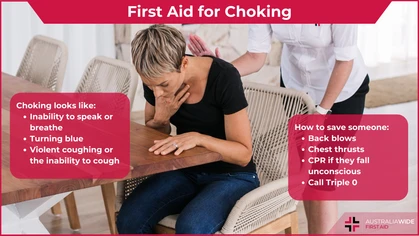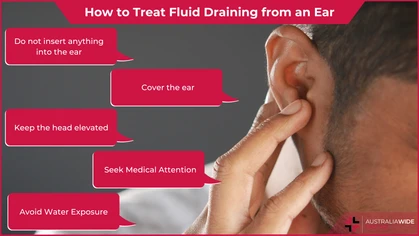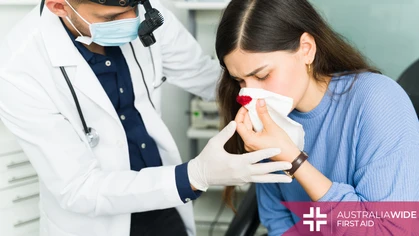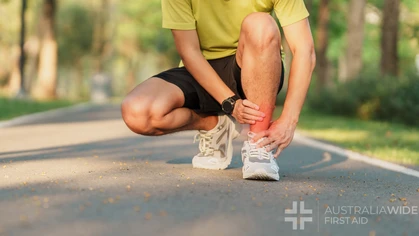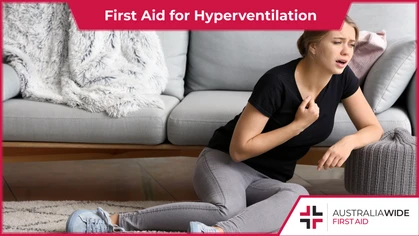Aortic Dissection First Aid

How-To
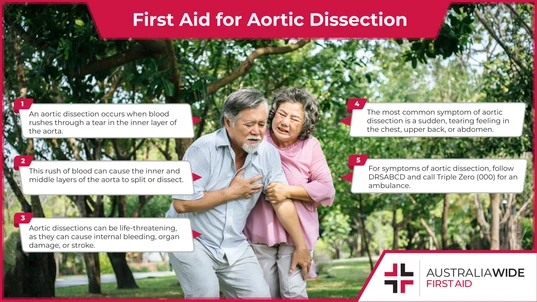
An aortic dissection occurs when blood rushes through a tear in the inner layer of the aorta. This can cause the inner layer to split from the middle layer, and result in aortic rupture. As such, it is important to know first aid for aortic dissection.
An aortic dissection can occur when there is a tear in the inner layer of the aorta, the main artery that carries oxygen-rich blood from the heart to the rest of the body. Blood rushes through the tear, which causes the inner and middle layers of the aorta to split or dissect. This can stop normal blood flow or rupture the aorta completely, and so it is important to know first aid for aortic dissection.What Causes Aortic Dissection?
Tears or weakened areas in the aorta occur due to a slow breakdown of cells that make up the walls of the aorta. While some people inherit a vulnerability to this type of cell breakdown, it can also be caused by stresses to the aortic wall. These stresses include: hypertension, or ongoing high blood pressure; atherosclerosis, a build up of plaque in the arteries; and, aortic aneurysm, an abnormal enlargement or bulge in the aortic wall.Signs and Symptoms of Aortic Dissection
It is important to remember, aortic dissections begin abruptly, and they can even happen while you are resting or sleeping. Common signs and symptoms of an aortic dissection include:- Sudden, excruciating pain in the chest, upper back, or abdomen. This pain has been described as a tearing, stabbing, or ripping feeling.
- Shortness of breath.
- Heavy sweating.
- Dizziness and confusion.
- Loss of consciousness.
- The pulse on one side of the body is weaker than the other.
- Stroke symptoms, such as vision problems, difficulty speaking, and pain, weakness, or paralysis on one side of the body.
First Aid for Aortic Dissection
Aortic dissection is a life-threatening condition, as it can result in severe internal bleeding, organ damage, and stroke. If a person begins exhibiting symptoms of aortic dissection, such as sudden onset chest pain, follow DRSABCD and call Triple Zero (000) for an ambulance. It is also important to remember, if a person is displaying these symptoms, sit them on the floor against a wall and make them comfortable. You should also loosen any of the casualty's tight clothing, and reassure them, as this can help lower their heart rate and take pressure off the aortic valve. Finally, ask someone to fetch a defibrillator, as the casualty may go into cardiac arrest. A diagnosis of aortic dissection can only be made at the hospital.Recommended First Aid Courses
For more information on how to prevent, identify, and manage symptoms of aortic dissection, head to a first aid course near you. The following first aid courses look at aortic dissection:Sources
- "Aortic dissection", Mayo Clinic
- "Aortic dissection", healthdirect
- "Aortic Dissection", Cleveland Clinic
Originally published at
https://www.australiawidefirstaid.com.au/resources/first-aid-for-aortic-dissection
as part of the Australia Wide First Aid Articles Library
